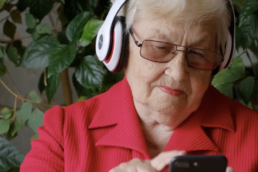The Project extension for community healthcare outcomes (Project ECHO) is a bidirectional teaching strategy that aims to disseminate knowledge and to increase the implementation of best practice in primary care in remote areas. Ontario has implemented the project since 2014 as the ECHO Ontario Chronic Pain and Opioid Stewardship. This unique educational model offers training via videoconferencing for primary care providers (PCP) to deliver specialised care for chronic pain disorders.
The four pillars of ECHO are (1) videoconferencing, (2) sharing best practices, (3) case-based learning, and (4) continuous outcome monitoring. Program ECHO uses videoconference technology to leverage scarce healthcare resources, minimizing distances between specialty and primary care and enabling clinicians from remote areas to discuss their patients’ cases with an expert interprofessional team. In addition, specialist mentors from the ECHO clinic share best practices with PCP to reduce variation in care and improve patient outcomes. PCP participants frequently evolve to become centers of excellence and start providing specialist care to their geographical area as they learn through interaction with the ECHO clinic. The case-based learning process occurs while the ECHO clinic prepares and shares a summary of the discussed case, summary of all recommendations, and relevant community resources not only with the person who presented the case but also with all the participants, which generalises the learning.
Benefits of participating in ECHO include reduction in patients’ expenses and time spent traveling to urban centers, improvement in quality of care in rural and remote areas, provision of no-cost continuing medical education, opportunities for professional interaction with colleagues, and access to specialists. As the ECHO model evolves, better methods for monitoring outcomes and increased rural access to primary care for ECHO will enhance the reach and efficacy of this program.
Benefits of participating in ECHO include reduction in patients’ expenses and time spent traveling to urban centers, improvement in quality of care in rural and remote areas, provision of no-cost continuing medical education, opportunities for professional interaction with colleagues, and access to specialists. As the ECHO model evolves, better methods for monitoring outcomes and increased rural access to primary care for ECHO will enhance the reach and efficacy of this program.

